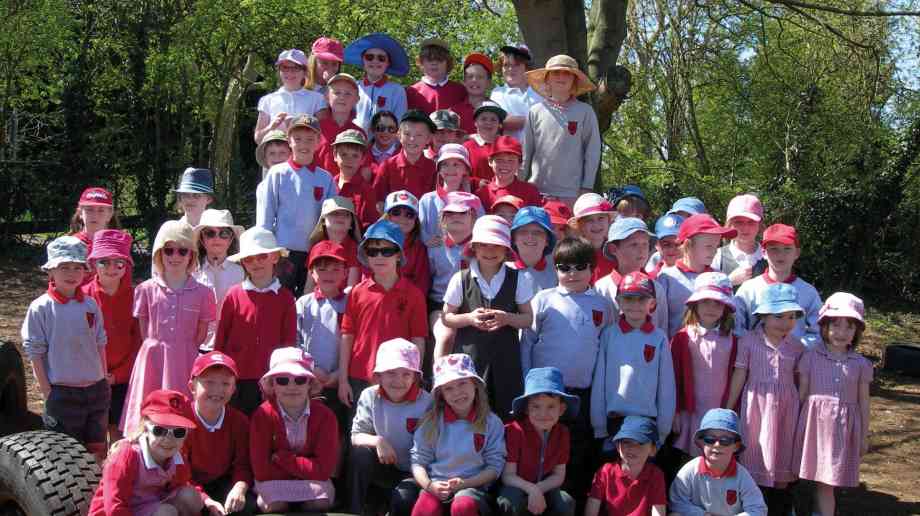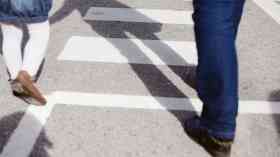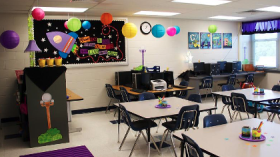
Sun safety in schools – Ensuring a duty of care
With children spending over eight hours of the school week outside, and with hot weather that we are awaiting this summer, the exposure to UV radiation should be a concern to both parents and teachers, says Marie Tudor of SKCIN: The Karen Clifford Skin Cancer Charity.
Around 80 per cent of our lifetime exposure to UV is accumulated during our childhood and whilst some sun is definitely good for us, too much of it can be seriously harmful. UV is a known carcinogen, meaning that damage from UV is accumulative, irreparable and can even result in death. It’s harsh, but it’s also true.
Children spend almost half their childhood at school, with approximately eight hours per week spent outdoors. During the hotter months of the year children are exposed to UV radiation from the sun, the majority of which is when UV penetration is at its strongest – between 11am and 3pm.
Without adequate protection, a child’s delicate skin can burn within minutes, causing irreparable damage that can significantly increase their risk of developing skin cancer in later life. That’s a worrying thought considering UV is responsible for around 86 per cent of the UK’s most common and fastest rising cancers.
A survey of 1,000 parents in 2011, commissioned by MPs on the All‑Party Parliamentary Group on Skin, found almost 40 per cent of pupils have suffered sunburn while at school.
Taking urgent action
The fact is that we seriously need to get with the programme when it comes to skin cancer. UK statistics are compelling and as a nation we need to take urgent action against the disease. More people die from skin cancer in the UK than in Australia, the UV capital of the world – so what are we doing wrong and how can we put it right?
Well, honestly, we are currently doing a lot of things wrong. Given that four out of every five melanoma deaths are preventable, education on the prevention and early detection of skin cancer is clearly paramount.
Over £100 million is spent every year on the treatment of the disease as cases continue to rise faster than any other cancer, yet little to nothing is awarded to promoting the solution – education, education, education.
Without doubt, sun safety has to be regarded as a serious health and safety issue in schools and the responsibility to ensure the health and safety of children during school hours is absolutely a schools duty of care.
The NICE guidelines for skin cancer prevention make it clear that children should never be allowed to burn and should be made aware of how important it is to protect their skin. Guidelines recommend that schools develop a policy on how to protect children when they are outside for more than a brief period in strong sunlight. However, these guidelines are not prescriptive or mandatory.
Not keen on sun screen
A tricky issue that surrounds sun safety in schools is that of the application of sunscreen during school hours. Most schools will not assist children in applying their sunscreen as teachers face time pressures and concerns over child abuse is a huge deterrent that comes with strong advice from local authority education departments and trade unions.
The big concern though is that many schools are using this as an excuse and thereby deferring all responsibility on the matter to parents. Unbelievably, some schools even ban or refuse to have sunscreen in school at all.
However, according to HSE (Health and Safety Executive) ‘health and safety legislation does not prevent school staff from applying or helping pupils apply sun cream. The Department for Education has already made clear that schools are expected to take a sensible approach to this issue. Simply using health and safety as a convenient excuse is misleading and unhelpful’.
Deferring the problem entirely to parents is not a solution. If a parent applies sunscreen at around 8am in the morning – by approximately 10am it will need reapplying. If that child then has a lunch break outdoors, followed by PE or an outdoor lesson, they could well accumulate up to two hours of unprotected sun exposure during the hottest time of the day when UV is most damaging. Ensuring your child applies their own sunscreen and is wearing their sun hat may work for very few parents, but the fact is that most primary school aged children will need to be reminded and/or supervised to ensure they are protected.
In essence the government defers the problem to schools, the schools receive no firm policy to enforce and are too concerned about time and child safety issues, so they defer the problem to parents. But the parents are not at school and cannot therefore enforce or control the problem effectively. In the meantime, children remain at risk. Surely children who are learning to read and write are capable of learning how to apply sunscreen?
UV awareness and skin cancer have always been regarded as a public health issue and not an educational one. The fact is that they are inextricably linked and if only the two government departments would ‘work together’, in the long-term huge health cost savings can be achieved and more importantly many lives would be saved.
Clearly the only solution is for someone to take ownership of this responsibility and the facts place schools at the helm, in the most natural position to make a powerful difference.
When it comes to education, primary school is the obvious place for children to learn about the importance of sun safety. If we educate children now, we can begin to evoke a culture change that will impact our future generations and those to come. It’s not rocket science, most skin cancer cases are preventable, yet alarmingly melanoma is now one of the biggest cancer killers in 15-34 year olds. This has to stop and we have to take action now.
So, how do we put it right? The prevention of skin cancer through education is the key objective of national skin cancer charity ‘Skcin’. In 2013 the charity launched the UK’s only Sun Safe Schools national, accreditation scheme, developed to educate children on the importance of sun safety and assist primary schools in implementing a suitable sun safe policy.
Key to the scheme’s success is recognising the importance of schools and parents working together to combine efforts. The scheme promotes a healthy communication with parents to combat the issues surrounding sun protective measures. Furthermore, all parents receive vital information booklets about sun safety and skin cancer courtesy of the charity who deliver the required amount to every school that registers. This creates a huge reach in raising awareness and helps parents reinforce key messaging at home.
Sun Safe Schools is free for all primary schools and consists of a four-step action plan that schools must complete, providing evidence and feedback that each step has been implemented before they are awarded their certification which is valid for one year and can be renewed annually.
The four-step process is guided and completed on-line via a schools login and is backed up by a huge range of resources to assist them in achieving each step of their accreditation and in educating children about sun safety with quality, fun, curriculum linked educational resources for key stage 1 and 2 pupils. From lesson plans, worksheets and assembly plans, to books, song, fun activities and policy guidance – everything a school needs to become ‘Sun Safe’ is at their fingertips.
The Sun Safe Schools scheme puts a big tick in every box that government guidelines recommend offering the most comprehensive solution in implementing an effective policy and teaching in one place, free for every primary school.
The Sun Safe Schools website has over 2,500 primary and pre-schools signed up to the scheme from across the UK. That’s over 350,000 children learning via the scheme in addition to over 350,000 families reached with helpful advice and free resources via the schools participation.
Some of the resources such as the illustrated and rhyming story ‘George the Sun Safe Superstar’ are being used in schools across Australia and Canada as the scheme is fast gaining global recognition with many British schools abroad, signing up to gain their accreditation and access these free resources.
Schools that register to gain their Sun Safe Accreditation are showing their commitment to their pupils and parents that they are prepared to go that extra necessary mile to protect children in their care. The reality is that schools are in a position of great power and if they can combine the efforts of parents to overcome perceived obstacles, they can make a huge difference towards reversing the compelling statistics that surround this devastating disease and ultimately save lives!
For further information about the scheme or to support the scheme in your area, please contact: marie.tudor@skcin.org
Further Information
www.skcin.org
www.sunsafeschools.co.uk
Latest News
12/12/2025 - 11:39
The government has announced at least £3 billion to create tens of thousands of new speci
12/12/2025 - 07:07
The findings suggest that children and young people attending schools in the North of England are less likely to take part in and benefit from residential visits.
11/12/2025 - 13:52
Ofqual has launched a 12-week public consultation on its proposed approach to regulating on-screen exams in GCSEs, AS and A levels.
11/12/2025 - 09:49
A report by Ofsted and the Care Quality Commission (CQC) finds that support for children with special educational needs and/or disabilities (SEND) who do not attend school full-time is too inconsistent.
11/12/2025 - 09:37
The easy-to-use web-based tool is designed to help schools estimate how an air filter unit could impact air quality and energy consumption in a classroom.







